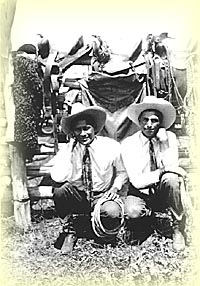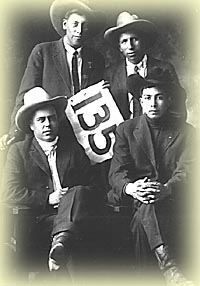|
The Dawes General Allotment Act of 1887 allocated land to individual tribal members and declared the rest of the land, once set aside by the Treaty of Fort Laramie of 1851, as surplus and open to European settlement. By the 1920s, Native people had made the transition from "hunters of the plains" to ranchers and cowboys. Federal Indian policy promoted agricultural development and programs were set up to further this goal. Because of their skills as horsemen, the Fort Berthold ranchers began to compete in rodeos, and many became well known in the area's rodeo circuit.
Page 1 | Page 2 | Page 3 | Page 4 | Page 5 | Page 6 | Page 7 | Page 8 Fort Berthold | Okanagan | Wood Mountain Introduction | Early Ranching | Ranching Life | Contemporary Ranching Life | Community Stories | Transition to Rodeo SACRED BEINGS | RANCHING | ENTERTAINMENT | RODEO | ARTS AND INDUSTRIES |



